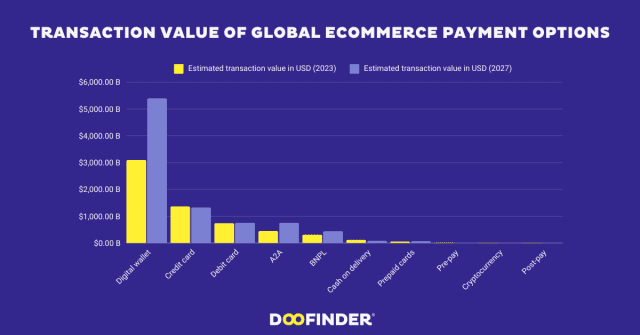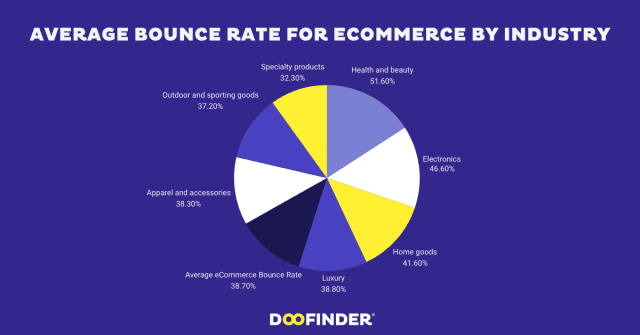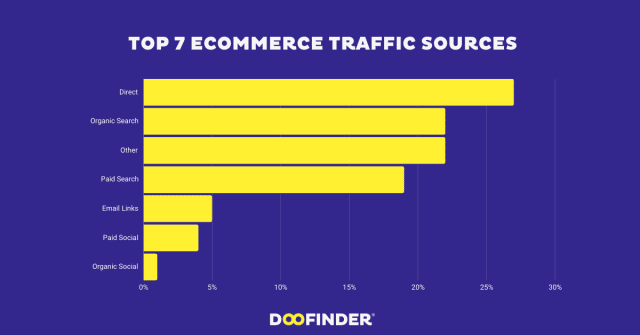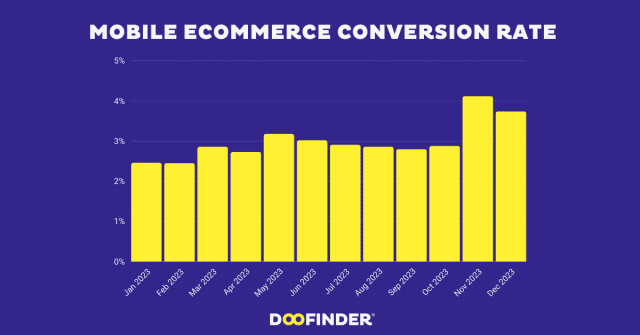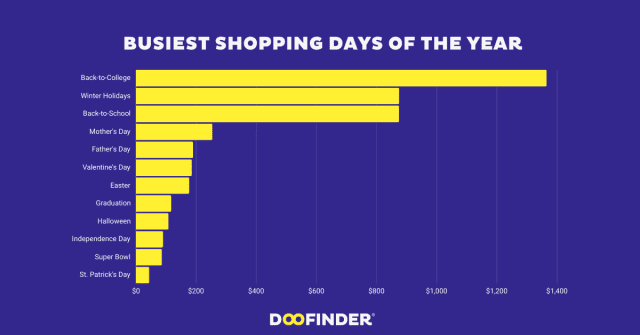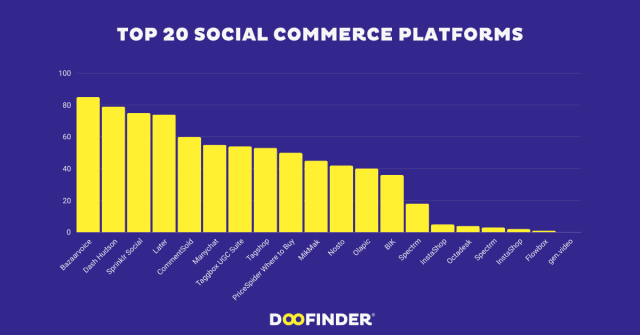CONTENTS
The fashion industry is stepping into the future with confidence—powered by smart technology, changing consumer habits, and the unstoppable growth of online shopping. It’s no longer just about what we wear—it’s about how we discover, buy, and connect with fashion.
Let’s dive into the fashion industry growth rate that is shaping the next five years.
Global Fashion Industry Market Size (2025–2030)
According to recent data on the fashion industry from Statista, the global fashion industry market size is set to grow steadily, reaching $2.12 trillion by 2030. That’s a 2.81% average yearly growth rate between 2025 and 2030. While it’s not massive growth, it reflects a big shift in how the industry operates—moving toward smarter, more sustainable ways of doing business.
How Much is the Fashion Industry Worth? As of 2025, the global fashion industry is estimated to be worth approximately $1.84 trillion, accounting for about 1.63% of the world’s GDP.

Fashion E-Commerce Market Growth (2025–2030)
The fashion e-commerce landscape is entering a golden age of growth, innovation, and transformation. Between 2025 and 2030, the global market is forecasted to grow at a robust CAGR of 11.5%, almost doubling in value within just five years. For e-commerce professionals, this presents both an extraordinary opportunity and a fierce battleground.
Fun fact: More than 70% of Gen Z now find new fashion brands through TikTok and Instagram, not through traditional ads. Social media is the new runway.
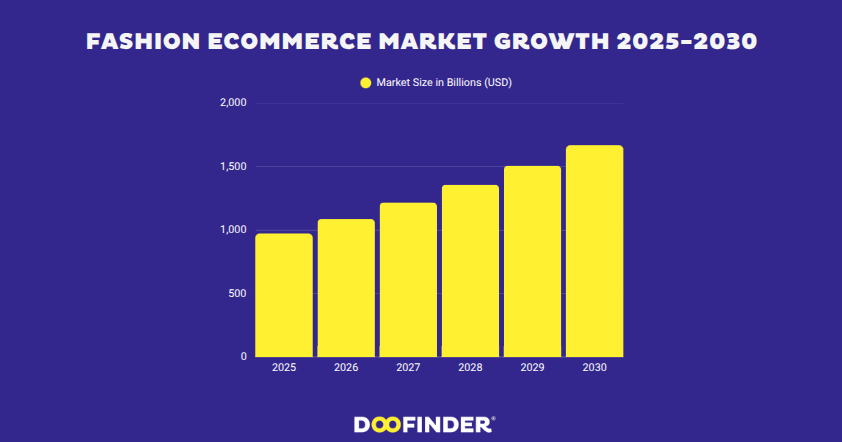
Key Trends Defining the Fashion Industry Growth
The fashion world is moving faster than ever—and it’s not just about what’s on the runway. From the way we shop to what we value in a brand, major forces are reshaping the industry. Here are four big trends that are driving fashion forward:
1. Tech is Changing the Game
The line between fashion and tech is blurring—and fast. Today, innovation is stitched into every layer of the industry, from digital design rooms to your phone’s camera. Virtual try-ons powered by augmented reality (AR) are transforming how we shop online, helping shoppers see how an outfit looks without ever stepping into a dressing room. This doesn’t just enhance convenience—it can cut return rates by up to 30%.
Meanwhile, artificial intelligence is becoming fashion’s newest stylist. AI-driven recommendations are personalizing the shopping experience, making customers feel seen (literally), and increasing their spend by up to 20% on certain platforms. Add to that the rise of digital-only fashion—outfits created purely for virtual environments—and we’re entering a new era where identity and style extend far beyond the physical world.
The future lies in Smart Search and AI-driven Recommendations. AI tools are currently integrated into 50% of e-commerce sites. Curious about how AI search and recommendations can transform your online store? Discover more about Doofinder.
2. Sustainability & Ethics
Today’s consumers want more than just aesthetics—they’re demanding accountability. Sustainability is no longer a trend; it’s a movement. A whopping 73% of global consumers say they’re willing to change their habits to reduce environmental harm, according to McKinsey. That means shoppers are scrutinizing what brands are made of—literally and figuratively.
Brands that openly commit to eco-friendly practices and ethical sourcing are seeing real rewards: they’re growing 1.5 times faster than their less-transparent counterparts, per NielsenIQ. Whether it’s biodegradable packaging, fair labor practices, or carbon-neutral supply chains, the future of fashion is rooted in responsibility.
3. Emerging Market Expansion
As the digital divide narrows, new regions are stepping into the global fashion spotlight. Markets across Asia-Pacific, Latin America, and Africa are experiencing a style surge, fueled by expanding internet access, rising incomes, and a youthful, trend-savvy population.
India’s fashion e-commerce market is on track to double by 2027, according to Bain & Company. Meanwhile, Sub-Saharan Africa is carving out its space as both a booming consumer base and a key manufacturing hub, thanks to infrastructure investments and competitive labor costs. These regions aren’t just following trends—they’re setting them.
4. The Resale & Secondhand Boom
Resale fashion isn’t just about thrifting anymore—it’s a revolution. The pre-loved market is booming, driven by eco-conscious shoppers and economic realities. From curated consignment platforms to luxury resale boutiques, secondhand has become both stylish and smart.
By the end of 2025, resale could represent a full 10% of all global fashion sales. And, by 2028, the global secondhand apparel market is expected to hit $350 billion. That’s not just a shift—it’s a redefinition of value, ownership, and what it means to be “in fashion.”
Conclusion: Where Fashion Is Headed
The fashion industry is no longer just keeping up with the times—it’s setting the pace for a bold, tech-driven, and value-conscious future. With e-commerce accelerating, sustainability moving from trend to expectation, and emerging markets reshaping the global style map, fashion is undergoing one of its most exciting transformations yet.
Technology is making shopping smarter. Consumers are demanding better—from ethics to experience. And secondhand is turning heads for all the right reasons. The numbers don’t lie: growth is steady, innovation is constant, and the next five years will redefine not just what we wear, but how fashion fits into our lives.
In short, the future of fashion isn’t just coming—it’s already here. And it’s dressed for progress.
Source Acknowledgment: We base our content on credible sources like Statista, Insider Intelligence, Data Reportal, and Census.gov, recognized for their accuracy and reliability, thereby ensuring the credibility of the information we provide.
- Increase your eCommerce sales by 20%
- The 10 largest eCommerce sites in the world
- How to start an online shop from scratch


